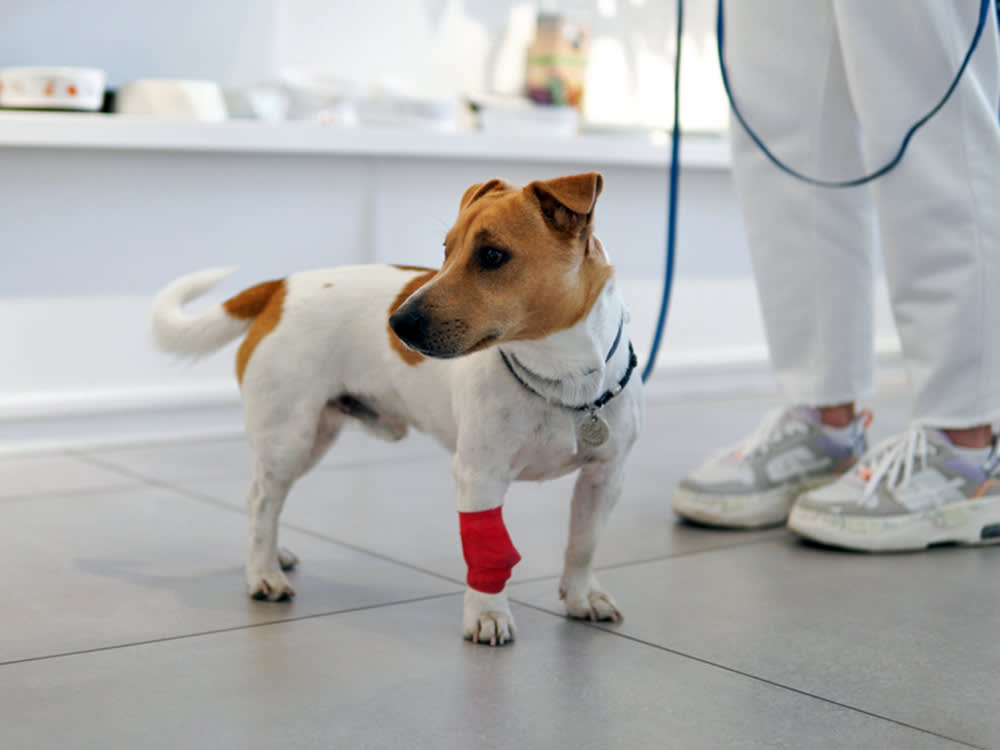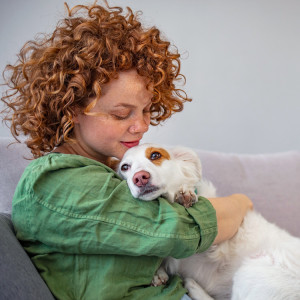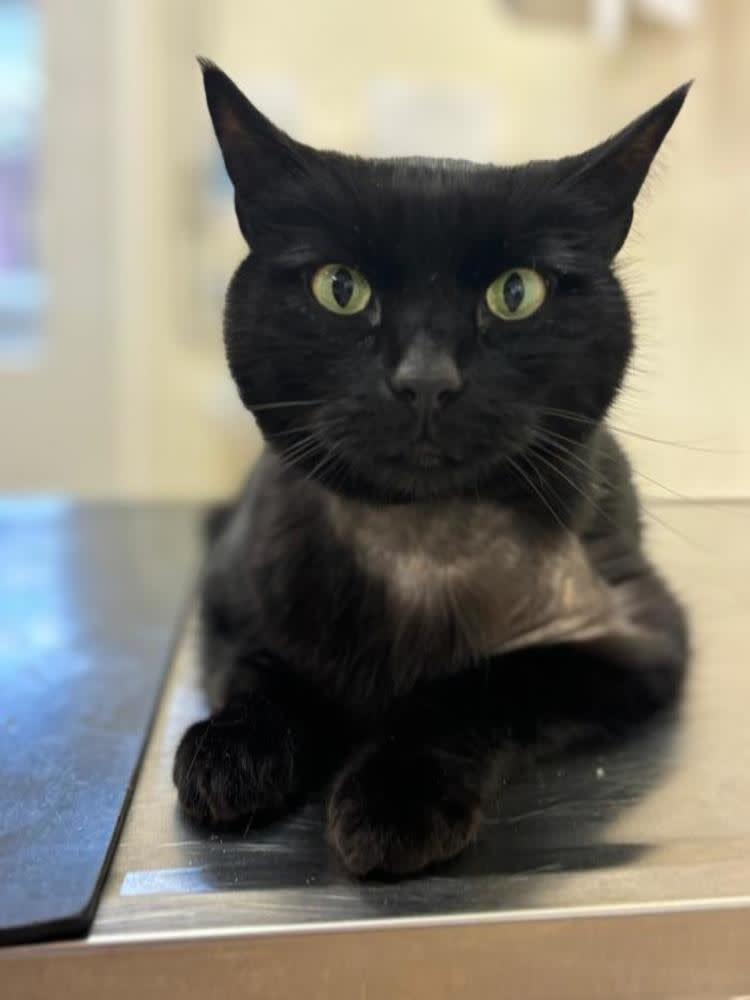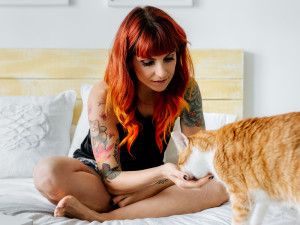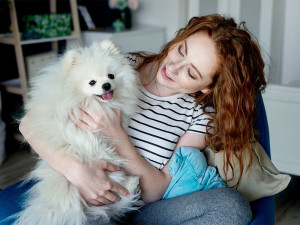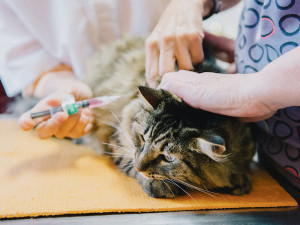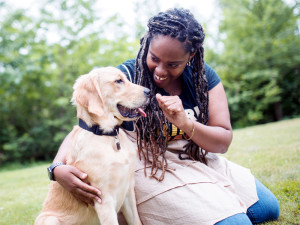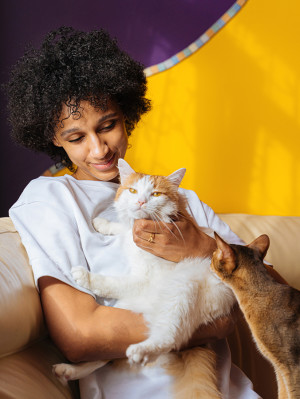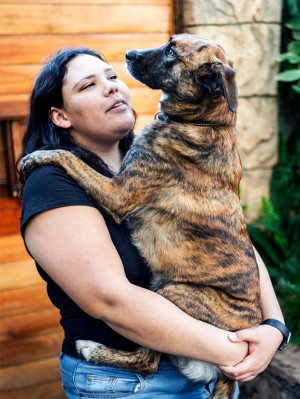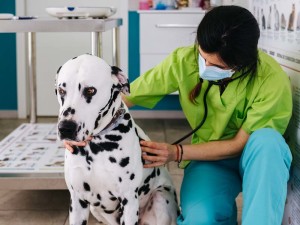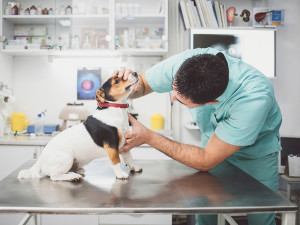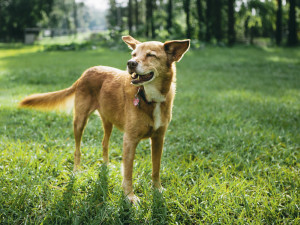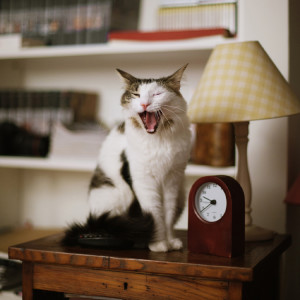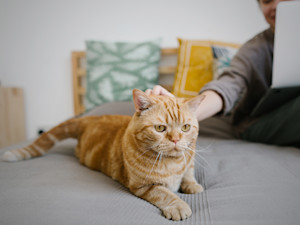Pet Blood Donation: How Your Dog or Cat Can Become a Lifesaving Hero
Poorly pets often need blood transfusions – here’s how you and your pet can help
In this article
Why do pets need blood transfusions? How do blood transfusions help pets? Why do pet parents register their pets as donors? What is the criteria for pets to become donors? How often can pets donate blood? How to prepare your dog or cat for blood donation What happens when pets come in to donate blood? Can you train your pet for the donation appointment? Are there any risks to pets when they donate blood? How can I register my cat or dogs as a donor? Do dogs and cats have blood types? Can other animals give blood?
We never like to imagine a scenario where our beloved pets get really sick, but sadly it does happen – and sometimes dogs and cats will need blood transfusions to help with their recovery. In fact, thousands of dogs and cats in the UK will need blood transfusions each year.
Before humans began giving and receiving blood, the very first blood transfusionopens in new tab was actually between dogs back in 1665. Since then, transfusion medicine has progressed immensely, and our pets continue to save lives by donating their blood to be transfused to other sick animals. Sharwood, a dog in Northampton, for instance, has completed a record breaking 40 blood donationsopens in new tab to help save fellow pups in need. We caught up with Registered Veterinary Nurse Charlotte Hodds to learn more about this life-saving treatment.
What is your role in animal blood donation?
I’m a Registered Veterinary Nurse specialising in internal medicine, working in a large referral hospital. We see lots of patients through our doors each day, some of whom require blood transfusions to survive (sometimes even multiple transfusions!), and I help these patients every step of the way. I take blood from our wonderful donor dogs or cats, calculate the required amount of blood to be transfused, transfuse the blood and identify and resolve any transfusion reactions if they occur.
Get (totally free) deals for food, treats, accessories, tech and way more pet parenting must-haves.
Why might a dog or cat need a blood transfusion?
Just like us, our pets can get poorly, too, sometimes developing conditions that require a blood transfusion, such as anaemia, haemorrhaging and problems with coagulation (the process by which a blood clot is formed), to name a few. It is important to note that a blood transfusion is not a curative procedure but is an urgent step that must be implemented to stabilise a patient to reach a diagnosis, perform surgery or allow time for medications to act.
Blood transfusions have saved thousands of dogs and cats and are imperative in veterinary medicine. Thousands of blood transfusions are conducted on both dogs and cats in the UK each year, with the majority of these being conducted on dogs due to a higher demand, as well as ease of dog blood collection and storage, compared to cats. The quantity of blood these patients receive is usually dependent on numerous factors, such as the patient’s packed cell volume (PCV), which is the percentage of red blood cells within the blood, and how much the PCV needs to be raised to bring it up to a safe range.
On average, canines receive about 12–20ml of blood per kg of body weight (so a 20kg Labrador would receive around 240–400ml of blood). Whereas cats receive, on average, around 10ml of blood per kg of bodyweight (so a 5kg cat would receive around 50ml of blood), although this is usually determined by the availability of feline blood products.
Teddy received a blood transfusion from his brother.
How does the blood donated help other animals?
Every donation your pet makes helps save the lives of others: one unit of blood can help save the lives of up to four dogs. Blood donating pets help to save thousands of other dogs and cats each year, who would otherwise have unfortunately succumbed to their illness and/or injuries.
So all this blood must need to be donated by other healthy pets?
Yes, exactly. In the UK, numerous veterinary hospitals are always on the lookout for canine and feline donors, and the Pet Blood Bankopens in new tab (a charity based in the UK, specialising in obtaining and supplying blood products to veterinary practices) exists to support veterinary practices by supplying blood products and advice – just like the ones we have as humans. The Pet Blood Bank runs numerous donation sessions across the country where their team takes blood from your brave pets and sends it for processing into lots of different blood products. It is then stored and shipped to veterinary practices when they need it.
Donors for veterinary practices are usually required for ‘whole blood donations’, where blood is transfused to a patient straight after taking it from the donor. Whereas the Pet Blood Bank has the facilities to split the blood into multiple different components (such as packed red blood cells, plasma and platelet concentrate), all of which can be used in different forms of transfusion medicine. Unfortunately, despite efforts there is currently no availability to have a pet blood bank for cats in the UK, therefore cat donations are almost exclusively whole blood transfusions taken at veterinary practices. It is possible to transfuse dog blood to cats (this is called a xenotransfusion), but it is always recommended to transfuse a cat with cat blood where possible.
Why do pet parents choose to register their cats and dogs as donors?
I find a lot of donors enlist their pets due to their love and care for animals – we have several pet parents of blood donors who would bend over backwards to help an animal in need and for that we are truly grateful.
We also have some pet parents whose pet requires a transfusion themselves and, like in the case of Teddy the cat above, they volunteer one of their other pets to be the donor (if suitable) who subsequently becomes a regular blood donor. The UK is really a nation of pet lovers and that really becomes evident when it comes to people volunteering their pets to be blood donors. People’s generosity and kindness will never fail to amaze me, and by doing so thousands of lives have been saved!
This is Bert and his brother Ernie. Ernie had IMHA (immune mediated haemolytic anaemia) and as a result needed two blood transfusions and an immunoglobulin transfusion.
What is the criteria for dogs and cats to become donors?
Dog requirements
For your dog to be a donor:
They must be born and have lived in the UK their entire lives.
Temperament-wise, they need to be relaxed, friendly, healthy and happy being handled and enjoy meeting new people.
They must be between one and eight years old.
They should be a minimum of 25kg in weight.
They must have never received a blood transfusion as well as being free of any current medication.
Vaccinations as well as flea and worming treatment should be up to date.
The welfare of your dog is of the utmost priority – we want your dog to love coming to see us and be enthusiastic about the process. They should have a reasonable level of obedience; owners are often surprised at how good their pet is for this process. The suitability of your dog for this process can be assessed by either the Pet Blood Bank or veterinary practices if you are unsure.
Cat requirements
As previously mentioned, there is no current availability for the Pet Blood Bank to collect, store and supply feline blood, therefore this is usually done, less frequently, at veterinary practices. For your cat to be a blood donor:
They must be born and have lived in the UK their entire lives.
They should be relaxed, friendly, healthy and happy being handled.
They must be between one and eight years old.
Ideally 5kg in weight, but a minimum of 4kg in weight is suitable.
They must have never received a blood transfusion as well as being free of any current medication.
Vaccinations as well as flea and worming treatment should be up to date.
Ideally, they should be indoor-only cats, but this is not essential.
Although cats are often given a very mild sedation when donating blood, they should still be very happy and confident being at the vets and travelling to the vets.
How often can our pets donate blood?
Dogs and cats can donate numerous times in their lives. My cat, Burger, is a blood donor and has currently donated four times. It is, however, recommended that donors should not donate for 12 weeks after blood collection.
Burger has been a donor for a few years now and is as good as gold.
What do pet parents need to do to prepare their cat or dog to give blood?
For your pet’s first appointment, it is important to think carefully about whether your pet matches the donor criteria and if you’re happy for your pet to partake in blood donation. To prepare for their first appointment, pet parents should be sure to have proof of vaccinations and regular flea and worming, as well as a history of their pet. For cats, it is recommended they haven’t eaten in the last four hours.
At this first appointment, assessments will be made to learn more about your pet, including a full health check, blood assessments and a heart scan for cats. If your pet is unsettled at any point during this process we will stop – their comfort comes first. Pet parents should be happy with their pet being clipped on their neck and sometimes leg for this. For cats receiving a heart scan, they should also expect a clip patch on the side of their chest. Once this initial assessment has been conducted and the team is content with your pet’s ability to be a donor, they will be added to the donor list, and you can be contacted regarding future donations. Donor pets must have yearly health checks, including bloodwork to continually assess health to donate, this can be offered through the Pet Blood Bank or participating veterinary practices.
What happens when a cat or dog comes in to donate blood for the first time?
Once initial screening has been conducted and your dog or cat fits the criteria, it is time to head down to a donation day hosted by Pet Blood Bank or to your local veterinary practice.
Dogs
Firstly, your dog will receive a pre-donation health check, which includes a physical examination, checking your pet’s history, clipping your dog’s neck, and applying a local anaesthetic cream and collecting some blood to ensure your dog is fit to give blood on that day. The results of these will be fully evaluated before donation.
If these checks go well, the donation can progress. Your dog will be lifted on to the table and asked to lie on their side (although sometimes they are standing), and a team of qualified staff members will raise your dog’s head, hold their legs lightly, clip their neck and clean it ready for donation. A needle attached to a blood collection bag is inserted into your dog’s jugular vein (neck vein) and 450ml of blood is taken. This process takes about 5–10 minutes.
Whilst donating, your dog will get lots of praise and tummy rubs, some even fall asleep during the process! After donating, dogs have a small bandage placed around their neck and get food and water (much like the lovely tea and biscuits humans get after donating). Following donation, it is advised that dogs rest for the remainder of the day and can go back to normal the following day.
Cats
Your cat will firstly receive a pre-donation check, which includes a physical examination, checking your pet’s history, clipping your cat’s neck, applying local anaesthetic cream, and collecting some blood to ensure your cat is fit to give blood on that day. If not done so already, your cat may also have a heart scan.
An intravenous catheter will be placed into your cat’s leg and a small dose of sedation will be calculated and administered. A qualified team of people will then clip your cat’s neck and clean it ready for donation. A needle connected to a syringe will be inserted into your cat’s jugular vein and around 40–50ml of blood is taken. This process takes 5–10 minutes, after which a neck bandage will be placed, and your cat will receive some food and water.
Your cat will be attached to a fluid line and receive intravenous fluids for two hours after donation as well as monitoring. It is recommended your cat is kept in the night after donation and can return to normal the day following.
Can you train a cat or dog beforehand to help with the process?
As previously mentioned, we must make every effort possible to ensure donors are relaxed and content during their visit. One thing you can do to prepare your pet and help them feel more comfortable is a little bit of training.
Dogs
You can build your dog’s confidence at the vets by visiting regularly with them: this can be just taking your dog into the reception area and giving them treats, lots of praise and attention. As a member of the veterinary team, I assure you the staff members will be more than happy to give your dog lots of fuss!
It is recommended to train daily and in stages. Bloods are obtained from your dog’s neck, so it’s worthwhile making sure they are comfortable with the position they will need to be in. Ask them to sit, then whilst standing behind them, gently put your hands under their chin and tilt their head upwards until their nose is pointing to the ceiling. A treat can be held above your dog’s head to focus them in this position for a few seconds, then relax your dog’s head and give them the treat and lots of praise. The time spent in this position can be built up over time, as well as the time spent before you give the treat.
Your dog will be lying on their side for donation, so you should ensure they are comfortable doing this. They should be comfortable with their feet and legs being touched, so an intravenous catheter can be placed (this is a catheter placed in a vein in their leg that allows us access to their vein to give sedations and fluid therapy if required). Whilst behind your sat dog, practice supporting their head and placing your hand behind their elbow and gently pushing forwards extending their leg. As with the blood positioning, build this up gradually with lots of treats and praise.
Dogs will also need to be comfortable with clippers and being clipped. You can get them used to this by turning the clippers on whilst your dog is in the same room and letting them listen to the noise for 10 seconds. Once they are comfortable with this, slowly move the clippers closer to them. If they react, turn off the clippers and try again another time. Build this up slowly over several days or weeks until your dog is comfortable being sat next to the clippers whilst they’re turned on; they can then be held to your pet without touching them.
Once they’ve nailed this, get them into the blood position explained earlier and rub the clippers against their neck without turning them on, once again providing lots of treats and praise. Finally, the clippers can be placed against your dog’s neck very gently whilst turned on for a couple of seconds. Don’t move the clippers or cut their fur though!
Cats
Cats can get stressed very quickly, so it is paramount we do not push them too far if they are uncomfortable. You can train your cat by getting them used to their carrier and being in a stationary car, again using treats and lots of positive interactions.
It is not uncommon for cats to receive a small amount of sedation for donation purposes so the training steps above for dogs are not necessary, but your cat should be comfortable with their head being raised for pre-donation blood testing and should be happy visiting the vet and having strangers handling them.
Implementing these steps into your pet’s routine will not only allow them to be much more comfortable with blood donation but much more comfortable in a veterinary environment, too – which is never a bad thing!
Will it hurt the dogs and cats? And are there any risks to them when they donate blood?
No, blood donation should never hurt dogs and cats. Local anaesthetic cream is placed on your pet’s neck before donation to eliminate any pain felt from the needle.
Due to the extensive screening process, there are minimal risks involved and most pets suffer no ill effects. Donors may feel a little tired and sometimes nauseous, much like when humans donate. Donor cats often receive a small amount of sedation for blood collection, and of course all sedation procedures carry a small risk. However, care is always taken to avoid any risks to the donor. But, as with any medical procedure, there is no guarantee that adverse effects will not be suffered. In this rare scenario, full veterinary care and intervention will be given to the donor animal.
How can pet parents register their cat or dogs as donors?
Your dog can be registered via the Pet Blood Bank websiteopens in new tab or by phoning them, they will also be able to tell you the next blood donation day and where it will be held. In the future, the Pet Blood Bank hopes to expand to offer feline blood, therefore cats can still be registered with them for when this becomes available. Alternatively, both cats and dogs can be registered as blood donors at many veterinary practices, just contact your local vet to see what they offer – they may advertise this on their website or social media pages.
Flynn is a three-year-old Labrador who is a relatively new blood donor and donated for the first time last week.
Do cats and dogs have blood types like humans?
Yes, they do! The major blood types we test for in dogs are DEA 1.1 positive or negative, whereas the major blood groups we test for in cats are A, B or AB. Breeds such as Greyhounds make perfect blood donors as they are more likely to be DEA 1 negative, which is ‘universal’, meaning it can be given to any patient without the need for blood typing in the event of an emergency. This is not the case for our feline companions: cats need to be blood-typed before every transfusion. Breeds such as Ragdolls, British Shorthairs and Persians are more likely to be blood type B, which is less prevalent among the feline population.
Is it just dogs and cats who can give and receive blood, or other animals, too?
Many species have benefitted from this procedure. In fact, the Pet Blood Bank regularly stores alpaca blood for transfusions, too. Back in 2019, a very poorly pangolin named Fortunate was rescued from poachers in South Africa and needed a transfusion to save his life. Fortunate was given blood from another pangolin, and this is believed to be the first transfusion of its kind, giving veterinary professionals invaluable insights into the treatment of this now highly endangered animal. Sadly, although Fortunate’s blood transfusion was a success, he later passed away due to his injuries inflicted by the poachers.
Is blood donation in the UK a charitable service or do the clinics make money from it?
The Pet Blood Bank is a charity and does not profit from blood sales. In fact, it is prohibited for veterinary practices to mark up any blood product obtained from the Pet Blood Bank. The cost veterinary practices pay is to cover the running of the service and any surplus funds the charity does make is reinvested into welfare and education of transfusion medicine.
